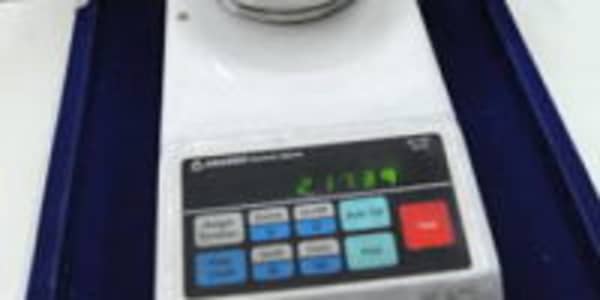While there are several gold exchange-traded products available, the SPDR Gold Trust, with over $60 billion in assets, is far and away the largest.
The second-largest gold ETF, the iShares Comex Gold Trust, has less than $8 billion in assets.
I get the most questions about the GLD, so I will confine myself to that product. Here are the answers to frequently asked questions.
Who owns the GLD?
The sponsor (creator) of thetrust is World Gold Trust Services, which is wholly owned by the World Gold Council. It, in turn, hired a trustee, Bank of New York Mellon Asset Servicing (a division of Bank of New York) that is responsible for the day-to-day administration of the trust. The trustee establishes the daily Net Asset Value (NAV)for each share. The NAV is the value of the assets, less the liabilities, on a per-share basis.
The marketing agent for the SPDR Gold Trust ETF is State Street Global Markets.
What do I own when I buy the GLD?
You own a fractional, undivided beneficial ownership interest in a trust, the sole assets of which are gold bullion and, from time to time, cash. You are a shareholder, but the prospectus clearly states you have no right to elect directors or receive dividends.
You do not directly own the underlying asset, nor can you take possession of physical gold. For some, that is a disadvantage.
"If you don't have it in my hand, it's not worth it," I've heard some say. If you feel that way, these type of gold investments are not for you. You are better off owning bullion directly or through some other medium that allows you to exchange shares directly for gold.
The stated investment objective of the gold trust is for the shares to reflect the performance of the price of gold bullion, less the trust's expenses.
Fair enough — but if you can't actually redeem your shares for physical gold, what is the advantage?
The big advantage of this type of investment: It is backed by bullion, even if you cannot take physical possession. For most, it's a convenient and cost-effective way to gain indirect access to gold. The shares can be bought and sold each day the stock market is open, and for many the cost of owning the trustmay be far lower than physically owning gold.
OK, so when you invest in the GLD you have an ownership interest in a Trust, which owns gold. Where is the gold, and who looks after it?
That is the job of the custodian. In the case of this ETF, the custodian is HSBC . The firm is responsible for safekeeping of the bars.
The custodian is required to hold an amount of gold equal to the assets of the trust. The website maintained by the marketing agent (State Street) states the value of the gold held in trust every day. On Aug. 3, 2011, for example, there was was 1,281.75 metric tons of gold held (41.2 million ounces), with a value of about $67.4 billion.
Where is the gold?
In the case of the GLD, in a vault in London, although the prospectus indicates there may be periods of time when some gold is held by subcustodians elsewhere. I recently visited this vault as part of our series on gold.
How do I know that all the gold is present?
There is a gold bar list that is published on a daily basis.
HSBCis required to notify Bank of New York every business day about the amount of bullion that is moved in and out of the allocated account. Every month HSBC also provides a weight list that identifies each bullion bar being held.
Twice a year the gold bars are independently counted, one consisting of a random sample count, the other a complete bar count. Here is the most recent certificate from the company that did the counting.
In addition, the Sponsor of the trust, theWorld Gold Trust, can also visit the vaults up to twice a year to inspect the gold. The most recent 10-K form of the ETF (November 2010) states: "The Trustee may, upon reasonable notice, visit the Custodian's premises up to twice a year and examine the Trust's gold held there and the Custodian's records concerning the Trust Allocated Account and the Trust Unallocated Account. The Trust's independent registered public accountant may also visit the Custodian's premises in connection with their audit of the financial statements of the Trust."
What's an allocated and an unallocated account?
Gold bullion is held mostly in vaults that are controlled by bullion banks. In practice, a small number of banks vault a large percentage of the world's bullion. They include HSBC, ScotiaMocatta, Deutsche Bank, JP Morgan, UBS, and Barclays .
These bullion banks all have relationships with each other. They move gold around between their accounts in accordance with their clients' wishes, and the banks themselves own gold as well.
How do you move the gold around and keep all the accounts straight?
You create allocated accounts.
An allocated account is a segregated account. In the case of the GLD, HSBC has an account in Bank of New York's name that holds uniquely identifiable gold bars, and segregates those bars from any other gold that they hold for other clients. The gold is owned outright by the Trust. It is not the property of the bank that is storing the gold, nor can it be used as part of a bank's reserve. The bank has no claim to it, they are merely a custodian — they are paid a fee to store the gold.
Unallocated accounts are used to move the gold from the accounts of the authorized participants (the brokerage firms that are authorized to create baskets) to and from the allocated account.
The difference between an allocated and unallocated account is that clients are not entitled to claim specific bars of gold, they only have a claim on the gold stock held by the dealer. Clients are technically unsecured creditors.
This sounds dangerous — why would tradershold gold in an unallocated account? Because it's easier and it facilities transfer of gold. It really is akin to a gold checking account. In your bank checking account, you do not have a claim on a specific dollar bill with a specific serial number. You have a claim on the supply of money held by the bank. Not having to check on the serial number of each dollar makes movement of money easier. It's the same with gold.
More of your gold questions answered
The GLD gold is held in an allocated account. During a business day, gold may be transferred into or out of the allocated account via unallocated accounts. This is standard business practice for the movement of gold. However, at the end of each business day, all of the gold is held in an allocated account.
What is the relationship between shares in the GLD and the gold?
The trust holds gold and in exchange for deposits of gold issues shares. The shares are in minimum blocks of 100,000 shares (called baskets) and are distributed to authorized participants, mostly brokerage firms, who in turn distribute them to individual investors.
Since the price of the ETF is approximately one-tenth the price of an ounce of gold (accounting for management fees), 100,000 shares is 10,000 ounces of gold .
So in order to create 100,000 shares of the gold trust ETF, an authorized participant would have to deposit 10,000 ounces of gold from their unallocated account into the fund's unallocated account, which would then be transferred to the GLD's Allocated Account.
In the process of transferring, the Custodian allocates specific bars from the Unallocated Account to the Allocated Account.
The opposite happens when authorized participants redeem their shares: 10,000 shares are removed from the GLD Allocated Account, moved to the GLD unallocated account, then to the unallocated account of the authorized participant.
All of this is done according to rules established by the London Bullion Market Association.
Is any of the gold leased or loaned out?
No. Once again, the GLD is an allocated account — that is, the gold is owned outright by the trust. The GLD prospectus states that "Gold held in the Trust's allocated account is the property of the Trust and is not traded, leased or loaned under any circumstances."
Is the gold insured?
The trust itself does not have insurance. However, HSBC holds insurance "on such terms and conditions as we consider appropriate." The sponsor and the trustee have a right to review the insurance certificate. HSBC is responsible for any losses due to fraud, negligence or willful default.
What happens if there's a terrorist attack and the gold is unavailable or destroyed?
There is a standard force majeure clause in the agreement between HSBC and Bank of New York. They are not responsible for terrorist attacks, wars or acts of God.
This is not an academic question; there was a large gold vault at the World Trade Center that was buried on 9/11. The gold was eventually recovered but the bank holding the gold was able to continue operations as normal by borrowing gold from elsewhere.
Is there any reason I might want to own physical gold directly rather than through a gold exchange-traded product?
Sure. For some, the ability to take physical possession of gold is the most important consideration. They don't want anything—a trust, a custodian, anyone—to come between them and their gold.
For traders with large amounts of gold there may be other reasons as well.
Some may want to store their own gold, which may save money if they have a sufficiently large supply and can negotiate a deal with a vaulting facility. The fees they are charged for storage may be lower than the 0.4 percent expense ratio that the GLD charges.
Others subject to regulatory control may want to accumulate bullion privately.





